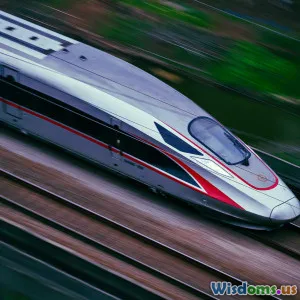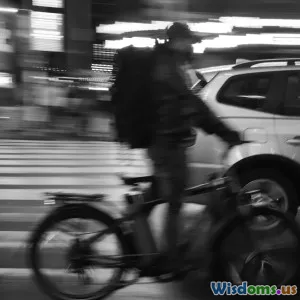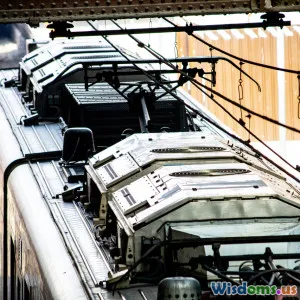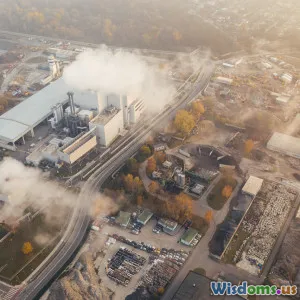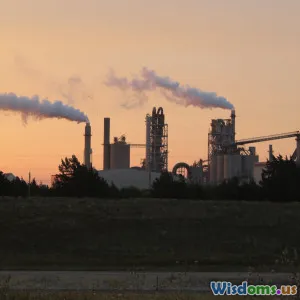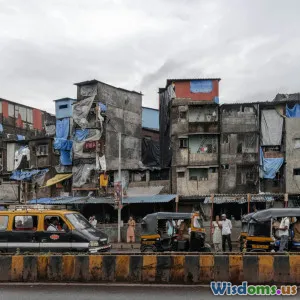
What if Congestion Pricing Came to Your Town The Surprising Outcomes
8 min read Explore the surprising impacts when congestion pricing comes to your town, from cleaner air to boosted local economies. (0 Reviews)
What if Congestion Pricing Came to Your Town? The Surprising Outcomes
Imagine waking up one day to a new policy in your town: a congestion fee for driving through busy areas during peak hours. At first, the idea might feel intrusive or costly, but the story of congestion pricing is far richer and more transformative than mere extra tolls. Cities worldwide are experimenting with this approach, with compelling results affecting traffic patterns, urban life, economics, and the environment.
Introduction: The Challenge of Urban Congestion
Congestion has long been the bane of growing urban communities. Stuck in traffic wastes time, burdens mental health, increases pollution, and stunts a city’s economic potential. According to the 2021 INRIX Global Traffic Scorecard, Americans lost an average of 99 hours per person annually due to traffic congestion, costing the economy nearly $180 billion.
In this context, congestion pricing — a system in which drivers pay a fee to enter or drive through high-traffic zones during specific times — emerges as a strategic solution. But what if your town adopted it? Let’s explore the far-reaching outcomes one could expect.
How Congestion Pricing Works
Congestion pricing charges drivers either flat or dynamic fees based on location, time, or traffic intensity. London’s implementation in 2003, for instance, charges fees between 7:00 AM and 10:00 PM on weekdays, reducing daytime traffic in the congestion zone by about 30%. Singapore’s Electronic Road Pricing is dynamic, adjusting charges in real-time based on congestion, leading to near-optimal traffic flow.
Surprising Outcome #1: Cleaner Air and Healthier Residents
One immediate effect of congestion pricing is a reduction in vehicles on the road during peak hours. Fewer cars equal less tailpipe pollution. When Stockholm introduced congestion pricing in 2007, local levels of nitrogen oxides (NOx) dropped by approximately 10%, and carbon monoxide by 15%, improving residents’ health significantly.
Respiratory illnesses related to air pollution – asthma, bronchitis, and others – often decline. A University of British Columbia study found that congestion pricing could save millions in healthcare costs annually by reducing premature deaths and hospitalizations.
Surprising Outcome #2: Changes in Commuting Behavior
Many are concerned congestion pricing might unfairly target those who rely on cars. However, evidence from cities like Milan shows that congestion fees promote shifts to public transit, carpooling, cycling, and walking. Milan observed a 30% decrease in traffic volumes and a 25% increase in public transport ridership post-implementation.
These shifts lead to broader community benefits: less congestion, lower stress, stronger social ties, and improved urban livability. For local governments, increased transit revenue can fund system expansions and upgrades.
Surprising Outcome #3: Economic Dynamics – Winners and Losers
Initially, businesses worry that fewer car trips mean less foot traffic and sales. But cities like Stockholm and London report overall economic robustness or growth following congestion pricing introduction.
One explanation is that decongested streets attract more pedestrians and cyclists, creating vibrant commercial corridors. Moreover, delivery services become more efficient without gridlock.
However, it is essential to consider equity. Residents living in zones where driving is necessary might face financial challenges. Successful programs often include exemptions, reduced fees for low-income drivers, or reinvestment of revenues into community services.
Surprising Outcome #4: Funding for Infrastructure and Social Programs
A compelling benefit of congestion pricing is revenue generation. In London, fees collected contribute over £160 million annually toward public transportation and road maintenance. New York City’s planned program expects to raise more than $1 billion per year, earmarked for subway and bus system improvements.
This cycle of investment creates positive feedback – better transit options reduce reliance on cars, reinforcing congestion reduction.
Surprising Outcome #5: Impact on Property Values and Urban Development
Studies reveal that zones with congestion pricing often experience a rise in property values, connected to cleaner air, decreased noise, and improved walkability. For example, after Stockholm’s scheme, residential property prices near the congestion zone appreciated faster than in other parts of the city.
Moreover, congestion pricing encourages sustainable urban development that prioritizes accessibility over car-centric design, resulting in denser, more vibrant neighborhoods.
What Challenges Could Your Town Face?
No system is without challenges. Public resistance due to perceived restrictions or costs is a major hurdle. Education and transparent reinvestment plans are crucial for acceptance.
Another challenge is ensuring alternative transit options are sufficient. Congestion pricing alone won’t solve problems if public transportation infrastructure is lacking or unreliable.
Lastly, the technical aspects—installing cameras, sensors, and payment systems—require investment and smart planning.
Conclusion: Why Your Town Might Benefit from Congestion Pricing
If congestion pricing were introduced in your town, expect not only fewer cars but a cascade of positive changes: cleaner air, healthier communities, more efficient transport, and enriched local economies.
By looking at global success stories—from Singapore’s pioneering dynamic pricing to London’s enduring zone system—and emphasizing equity and reinvestment, towns can tailor policies for optimal outcomes.
As urban populations grow and the climate crisis deepens, the question shifts from "if" to "when" towns like yours introduce congestion pricing. Preparing, educating, and engaging residents will ensure this transition promotes smarter, healthier, and more vibrant communities.
Takeaway: Congestion pricing isn’t just a traffic tool. It’s a catalyst for urban transformation that can revitalize your town's social fabric, environment, and economy.
Sources:
- INRIX Global Traffic Scorecard, 2021
- Stockholm congestion pricing environmental report, 2007
- Transport for London Annual Report
- University of British Columbia’s congestion pricing health impact study
- City of Milan traffic and transit statistics
- New York City congestion pricing financial impact analysis
Rate the Post
User Reviews
Popular Posts














